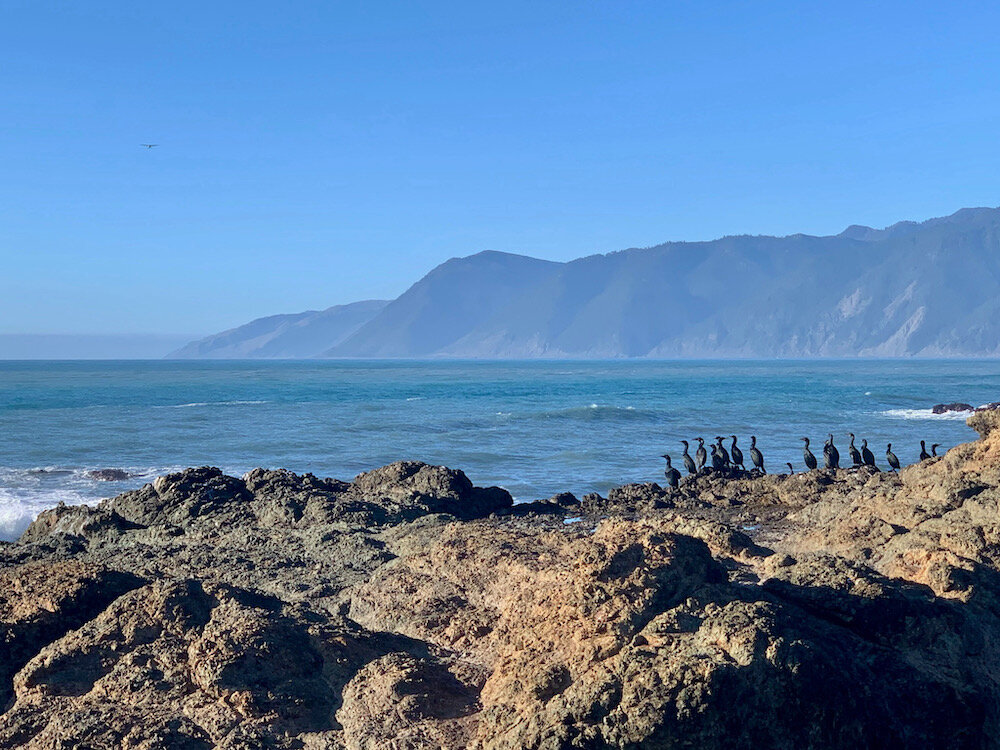Birding & Wildlife
With diverse natural habitats and acres of undeveloped wilderness from the Redwoods and Benbow Valley to the Lost Coast and King Range, Southern Humboldt is a paradise for Northern California birds and other wildlife.
One of the best locations for birding in the area is Southern Humboldt Community Park outside Garberville, where birders have sighted more than 130 species — including the American Kestrel, Bald Eagle, Cooper’s Hawk, White-throated Swift, Grasshopper Sparrow, Lazuli Bunting, Merlin, Northern Harrier, Western Bluebird, Belted Kingfisher, Western Meadowlark, Wood Duck, and White-tailed Kite, among many others. A lower-elevation mix of grassland, farmland, riparian and riverine areas, and old-growth Bay Laurel, mixed hardwood and conifer forests, and redwoods, contribute to this impressive diversity. Expect to spot the greatest variety of species April to June. For information about bird walks, check out the Redwood Region Audubon Society calendar at www.rras.org.
Humboldt Redwoods State Park encompasses a wide variety of habitats as well, making it home to a myriad of birds, mammals, fish, and reptiles. While some animals are seen more often than others, the park offers plenty of wildlife viewing opportunities.
Ravens, robins, and wild turkey are frequently seen throughout the park, and Steller's jays are spotted regularly in camping areas. Mammals commonly seen include black-tailed deer, California ground squirrels, gray fox, and raccoons. Less commonly seen are larger animals such as the black bear and mountain lion. Perhaps one of the most interesting creatures in the coast redwood ecosystem is the banana slug, a ground mollusk that can be yellow, brown, or a splotchy combination. Banana slugs are revered for their work as virtual vacuums for the forest floor, munching everything from vegetation to fungi.
In the 64,000 acre King Range National Conservation Area, keep an eye out for a roaming herd of Roosevelt elk, as well as black-tailed deer, black bear, and gray fox. The Mattole Estuary is home to river otters, coho and chinook salmon, and steelhead. Nearly 300 species of native and migratory birds have been spotted in the King Range. While redwoods don’t grow here (the hot dry summer winds in the mountains keep them in the surrounding areas), other varieties of old-growth trees act as important habitat for the northern spotted owl, bald eagle, coopers hawk, peregrine falcon, osprey and brown pelican.
On the coast, you might spot seals, sea lions, or California gray whales off-shore and ocean animals from hermit crabs to sea stars and anemones in rocky tidepools. Birds viewed on the Lost Coast’s offshore rocks (part of the California Coastal National Monument) are home to cormorants, brown pelicans and murres. On land, it’s common to see turkey vultures, ospreys and quail.
For more information about wildlife in Southern Humboldt, check out the excellent natural history display and book store at the Humboldt Redwoods State Park Visitor Center.


